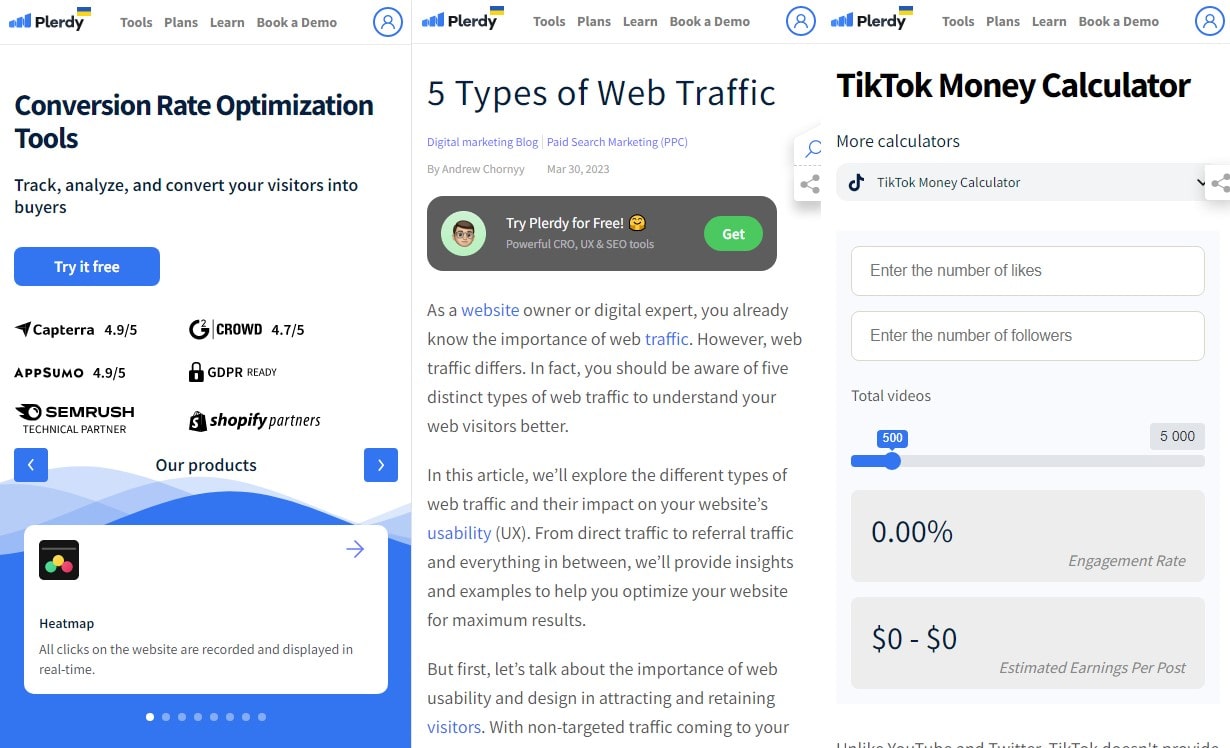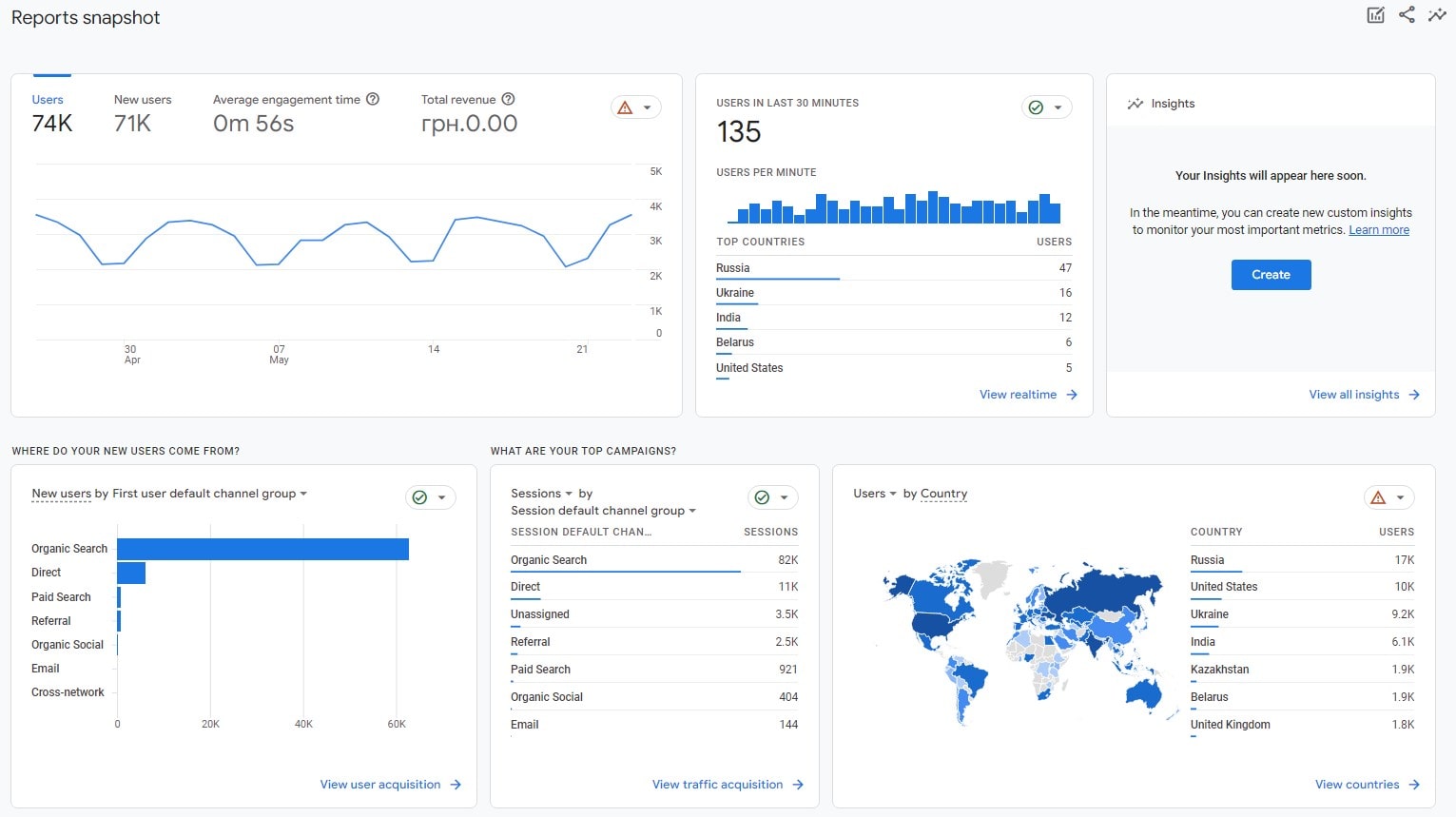Imagine if market research was a person; it would be constantly checking the horizon with a telescope, predicting the next big wave while everyone else is still paddling out. In today’s fast-paced world, staying ahead in market research isn’t just about keeping your telescope polished; it’s about leveraging the latest trends to navigate the sea of data efficiently and effectively. This necessity for innovation is where tools like Plerdy come into play, offering insights that help brands stay ahead of the curve. As we enter the future, understanding these emerging trends becomes crucial for making informed decisions and maintaining a competitive edge in the bustling marketplace.

Advancements in AI and ML for Market Research
Artificial Intelligence (AI) and Machine Learning (ML) are revolutionizing various sectors, and market research is no exception. These technologies are reshaping how research and market analysis are conducted, offering new levels of efficiency and insight into consumer behavior.
Revolutionizing Market Research with AI and ML
AI and ML aren’t just tools but game-changers in market research. They automate complex analytical tasks and process large data sets, uncovering patterns and trends in market research that were once impossible to detect. Machine learning, a branch of AI, evolves by learning from data, enhancing its precision and efficacy over time. This advancement allows market researchers to accurately predict consumer behavior, tailor marketing strategies, and identify emerging market trends swiftly and effectively.
AI’s Role in Market Research Data Analysis
In market research, AI transforms data analysis beyond traditional statistical methods. It effectively processes social media, customer feedback, and online interactions to provide a complete view of market trends and consumer behavior. AI-powered tools, including natural language processing (NLP) and sentiment analysis, convert unstructured data into valuable market research insights, revealing not just consumer actions but also their motivations.
ML’s Impact on Gaining Consumer Insights
ML extends AI’s capabilities in market research by analyzing data and learning from it. This ongoing learning process enables ML algorithms to delve into consumer preferences and behavior, forecast needs, and predict future trends. ML algorithms can, for instance, analyze consumer purchase history, online browsing patterns, and social media engagements to provide personalized product suggestions, elevating customer experiences and boosting sales.
Challenges and Prospects in AI and ML-Driven Market Research
Despite their potential, AI and ML in market research come with challenges, such as the complexity of algorithms and the requirement for extensive, clean datasets. Nevertheless, their research and market analysis advantages greatly surpass these challenges, providing a competitive edge through in-depth insights and informed decision-making.
The Future of AI and ML in Market Research
As AI and ML advance, they will become increasingly integral to all facets of market research. Organizations adopting these technologies will be better positioned to understand complex market dynamics, meet consumer demands, and propel business growth. AI and ML are not just technological breakthroughs; they are catalysts for innovation in market research, paving new ways to comprehend and engage with the market. Their ongoing evolution promises a future where data-driven insights are at the core of strategic business decisions.
Mobile-First Research

Gone are the days when market research meant sitting behind a desk, poring over data pages. Today, it’s all about reaching people where they are: on their mobile devices. The shift towards mobile-first research is not just a trend; it reflects how integral smartphones have become in our daily lives.
Surveys on Mobile Devices
The convenience and ubiquity of smartphones have made mobile surveys a vital tool for researchers. Mobile surveys can reach respondents anytime, anyplace, improving response rates and data timing. They’re designed to be user-friendly, with simple interfaces that encourage participation. This approach aligns with consumer habits, as more people use their mobile devices for everything from shopping to socializing.
In-App Feedback Collection
Beyond traditional surveys, in-app feedback mechanisms provide a seamless way for businesses to gather insights directly from users while engaged with an app. This method is incredibly effective for capturing real-time experiences and opinions, offering valuable data that can be used to enhance user experience, address issues promptly, and tailor content to meet users’ needs more accurately.
Mobile-first research represents a significant shift towards more interactive, immediate, and user-centered data collection methods. It recognizes the mobile phone’s role as an extension of the consumer, making it a powerful tool for gaining insights into consumer behavior, preferences, and feedback. Mobile-first market research is essential as organizations attempt to interact with their audiences. This strategy not only aligns with current consumer behavior but also paves the way for more innovative and responsive research methodologies in the future.
Harnessing Social Media Insights with Social Listening and Sentiment Analysis

In the current digital landscape, social media transcends mere communication, serving as a treasure trove of insights for market research. Social listening and sentiment analysis have become critical tools in tapping into this resource, offering real-time insights into public perceptions and conversations.
Social Media Monitoring for Market Research
Market research social listening involves monitoring social media for brand, competition, and industry mentions. This approach enables businesses to collect direct feedback and assess public opinion. Companies can monitor discussions across various platforms by employing sophisticated social listening tools, pinpoint influential voices, and swiftly address customer feedback. These tools are vital in understanding consumer behavior, preferences, and challenges, proving invaluable for strategic market research.
Applying Sentiment Analysis in Market Research
Sentiment analysis uses NLP and machine learning to interpret the emotions of social media posts. This method allows businesses to categorize social sentiments into positive, negative, or neutral categories, providing deeper insight into consumer attitudes toward their brand or products. Tracking sentiment trends helps companies recognize shifts in consumer sentiment, preempt potential crises, and identify opportunities to improve customer experience.
Social listening and sentiment analysis mark a transition to more empathetic and responsive approaches in market research. By interpreting consumer voices via social media, businesses gain the information necessary to make informed decisions, nurture customer relationships, and maintain a competitive edge. As we navigate the expansive world of social media, these tools are essential, guiding organizations toward effective engagement and market growth.
Voice of the Customer (VoC) Strategies in Market Research

In today’s dynamic market, Voice of the Customer (VoC) programs are crucial, directing businesses toward success by highlighting customer needs, preferences, and feedback. These programs go beyond mere listening; they involve comprehending and implementing customer insights to foster improvement and innovation in the market.
Initiating VoC Programs for Market Insight
The initial step in deploying an effective VoC program is systematically collecting customer feedback across various channels. This encompasses surveys, interviews, social media analysis, and customer support interactions, which are essential for market research. Centralizing this feedback for analysis and action is key. Businesses must design surveys that ask pertinent questions, garnering insights that directly influence customer satisfaction and loyalty, an integral part of market research.
VoC Data Analysis for Market Research
The essence of VoC programs in market research is transforming raw feedback into tangible insights. This is achieved through analytical tools that scrutinize feedback, discern trends, and identify improvement areas. Tools like sentiment analysis enable businesses to understand the emotional undertones of customer feedback, which is crucial for market research. Recognizing the sentiments and themes in customer feedback allows companies to make decisions that elevate the customer experience.
VoC programs are essential for companies aiming to strengthen customer relationships. By adeptly implementing and analyzing VoC data, businesses can extract insights that propel product innovation, enhance customer service, and improve overall customer experiences. Moving forward, the ability to attentively listen and respond to customer voices will become a distinguishing factor in the market, rendering VoC programs indispensable for sustained business success.
Predictive Analytics Enhancing Market Research

Predictive analytics offers a revolutionary approach to market research, functioning like a futuristic lens for businesses. It predicts market trends, customer behaviors, and industry shifts using data, statistical algorithms, and machine learning. This approach is far from mere speculation; it’s a data-driven method that uses historical information to forecast future market scenarios. Businesses leverage predictive analytics to anticipate market needs, preempt potential challenges, and seize emerging opportunities.
Core Techniques of Predictive Analytics in Market Research
Predictive analytics in market research relies on robust statistical models. Key techniques include regression analysis, forecasting, multivariate statistics, pattern matching, predictive modeling, and machine learning. These tools are crucial for analyzing current and historical data to predict future market events. In market research, e-commerce entities, for instance, apply predictive analytics to decipher future customer purchasing patterns, enhancing their ability to tailor offers and boost sales.
Applications of Analytics in Market Research
Predictive analytics in market research is vast. It enables the prediction of consumer demand, identification of upcoming market trends, and optimization of product development strategies. Predictive analytics in market research helps retailers manage inventories and estimate sales. This strategy cuts down on overstocking costs and minimizes stock shortages, ensuring customer satisfaction by guaranteeing product availability when needed.
Strategic Advantage of Predictive Analytics in Market Research
Predictive analytics offers a strategic advantage in market research, empowering businesses to make decisions based on foresight. This forward-looking approach allows companies to craft proactive strategies, positioning them ahead in their respective markets. As organizations increasingly use data, predictive analytics in market research becomes more important in decision-making for businesses seeking to succeed in the dynamic market.
Blockchain for Data Security and Authenticity

In an era where data breaches are not just a possibility but a regular headline, blockchain emerges as a knight in digital armor for data security and authenticity. This technology, best known for powering cryptocurrencies like Bitcoin, is now paving the way for secure, transparent, and tamper-proof systems in market research and beyond.
Blockchain in Market Research
Blockchain technology offers an innovative approach to managing and securing research data. Blockchain makes it nearly impossible for hackers to compromise data by storing it across multiple computers. Links between data blocks create a safe information chain with an audit trail. Once data is recorded, it cannot be changed without changing all subsequent blocks, which needs network consensus to protect data integrity.
Benefits of Blockchain for Research Integrity
Decentralized blockchain technology protects data and verifies research findings. In market research, where data authenticity directly impacts the validity of insights, blockchain can serve as a trust protocol, verifying the origin and integrity of data collected. It enables researchers to track the data lifecycle from collection through analysis, ensuring that the insights derived are based on accurate and untampered information. This level of transparency and security is invaluable in building trust between researchers and participants and among stakeholders relying on research findings for critical decision-making.
As market research evolves in complexity and scale, adopting blockchain technology offers a promising solution to the growing concerns over data security and authenticity. Its ability to provide a secure, transparent, and immutable record of transactions positions blockchain as a critical tool in the quest for trustworthy and reliable market research data. As we move forward, integrating blockchain into market research methodologies will protect data and enhance the credibility of research outcomes, making it a game-changer in the pursuit of knowledge and insights.
Integration of Qualitative and Quantitative Data

In the rich tapestry of market research, blending the threads of qualitative and quantitative data creates a more nuanced and vibrant picture of consumer behavior. This integration enriches the insights and bridges the gap between numerical data and the stories behind the numbers. It’s about understanding the ‘what’ and the ‘why’ in tandem, providing a holistic view that neither approach could achieve alone.
Blending Qualitative and Quantitative Insights
The magic happens when the measurable meets the meaningful. For instance, quantitative data might tell you that product sales have spiked, but qualitative insights reveal that this surge is due to a viral social media challenge. Integrating these data types allows businesses to quantify their market position while understanding consumer sentiments and motivations. Techniques like mixed-method research, where survey results are complemented with in-depth interviews or focus groups, enable companies to validate and deepen their quantitative findings with qualitative narratives.
Case Studies of Integrated Research
Consider a tech company that noticed a decline in app usage through quantitative tracking. By following up with qualitative interviews, they discovered that users needed more support with the usability of a new feature. This integrated approach led to targeted improvements that boosted user satisfaction and app engagement. Such case studies demonstrate the power of combining quantitative and qualitative data, leading to actionable insights that can significantly impact business strategies and customer experiences.
Businesses must use qualitative and quantitative data in market research to properly understand their market and make informed decisions. This comprehensive approach offers a competitive edge, enabling companies to navigate the complexities of consumer behavior with greater confidence and precision. As we move forward, the ability to seamlessly merge these data types will define the future of market research, turning disparate pieces of information into a cohesive strategy for success.
Conclusion
To make educated decisions and stay competitive in the ever-changing market research landscape, keep current. The integration of AI, the shift towards mobile-first research, the power of social listening, and the precision of predictive analytics represent the tip of the iceberg. For businesses seeking to dive deeper into these insights and explore the vast ocean of possibilities, Plerdy’s blog is your go-to resource. With articles rich in actionable advice and cutting-edge strategies, Plerdy helps you unlock the full potential of your data. Ready to elevate your market research game? Explore Plerdy’s suite of tools designed to empower your business with data-driven solutions.
